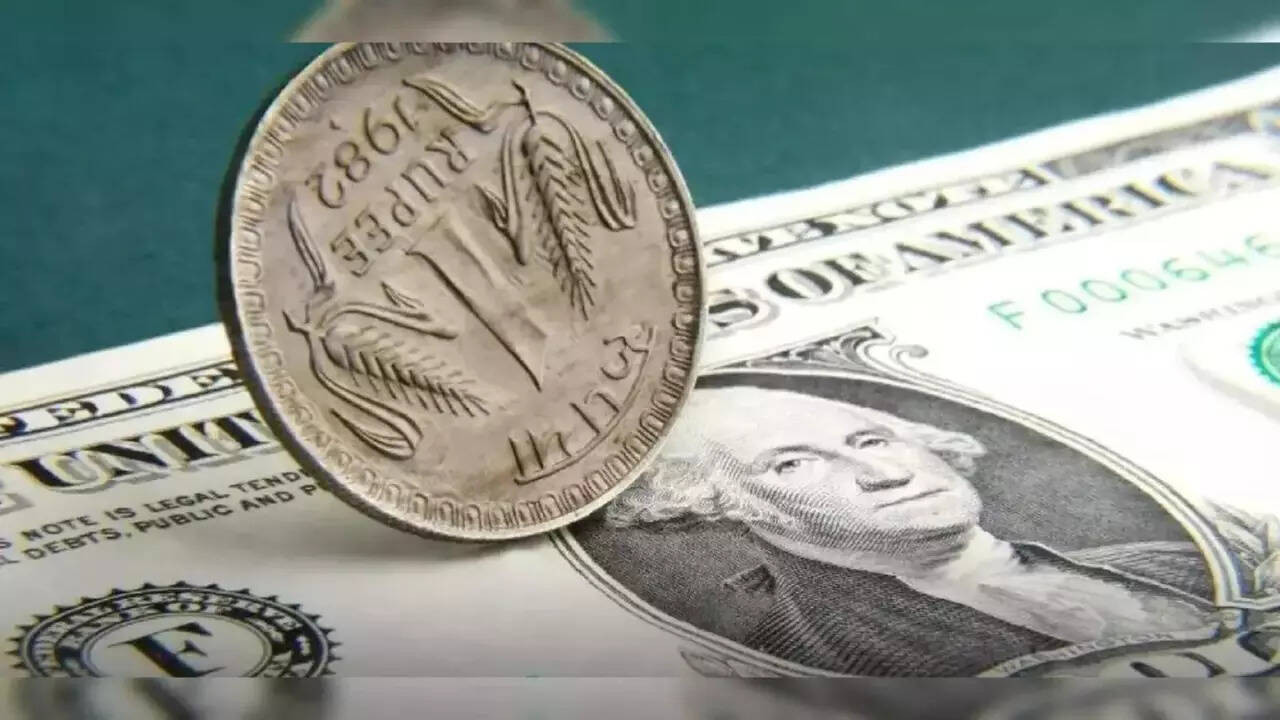The rupee ended flat at 87.58 against the US dollar on Friday, supported by foreign fund inflows and a weaker greenback, despite trade tensions with the US. The currency traded in a narrow range amid domestic equity weakness and concerns over President Trump’s tariffs, set to take effect later this month.
Navigating the Forex Seas: A Look at the Rupee’s Recent Performance
The financial markets are often described as a complex ocean, with currents of global events and shifting sentiments constantly influencing the value of currencies. Recently, the Indian Rupee has been navigating these waters with a steady hand, showing resilience amidst a backdrop of international economic uncertainty. While the rupee ended the day at a relatively flat 87.58 against the US dollar, this seemingly uneventful close masks a week of subtle shifts and underlying pressures. Let’s dive deeper into the factors at play.
A Weaker Dollar Provides a Slight Tailwind
One of the key influences on the rupee’s performance has been the slight weakening of the US dollar. The dollar’s dip, fueled by speculation surrounding upcoming US tariff deadlines, created a small window of opportunity for other currencies, including the rupee. Think of it like this: if the dominant player in a game stumbles, it gives other competitors a chance to gain ground. However, this advantage was only partially realized, highlighting the rupee’s sensitivity to other countervailing forces.
Foreign Investors Return to Indian Shores
Adding a layer of complexity to the story is the resurgence of Foreign Institutional Investors (FIIs) as net buyers in the Indian market. After a period of cautious observation, these investors seem to be regaining confidence in the Indian economy’s long-term prospects. This injection of foreign capital provides crucial support for the rupee, acting as a buffer against potential downward pressures. Investment flows are vital; they represent more than just numbers on a screen – they symbolize trust in a nation’s growth story.
<img src="image-url-here.jpg" alt="Graph showing trends in rupee exchange rate, illustrating the importance of understanding currency fluctuations.”/>
The Looming Shadow of US Tariffs
However, we can’t ignore the elephant in the room: the impending US tariff deadline. The uncertainty surrounding these tariffs casts a long shadow, impacting global trade dynamics and triggering ripples across currency markets. Investors are understandably wary, as the imposition of new tariffs could disrupt supply chains and dampen economic growth, potentially leading to a flight to safe-haven assets like the US dollar, and negatively impacting the rupee. It’s a waiting game, with the market holding its breath.
Balancing Act: Domestic Factors at Play
Beyond the global stage, domestic factors also contribute to the rupee’s intricate dance. India’s own economic indicators, including inflation data, GDP growth projections, and government policies, all play a crucial role in shaping investor sentiment and influencing the currency’s trajectory. Furthermore, the Reserve Bank of India’s (RBI) monetary policy decisions, such as interest rate adjustments, have a direct impact on the rupee’s attractiveness to foreign investors. It’s a delicate balancing act, requiring careful calibration to maintain stability and foster sustainable growth. You can read more about the impact of RBI policies [here](internal-link-to-related-content).
Looking Ahead: Navigating the Uncertainty
Predicting the future of any currency is a fool’s errand. However, by understanding the key drivers at play – the strength of the US dollar, the flow of foreign investment, the shadow of US tariffs, and the influence of domestic economic factors – we can gain a clearer perspective on the forces shaping the rupee’s value. Will the rupee continue to demonstrate resilience in the face of global headwinds? Or will the pressure of international events prove too great? The coming weeks promise to be a fascinating period of observation as the rupee navigates these uncertain seas. Monitoring these factors will be key to understanding the near-term movement of the Indian Rupee.







